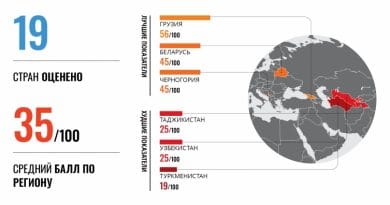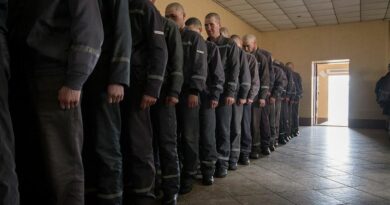Central Asia: attacks on journalists don’t become less
The Foundation’s report “Justice for Journalists” (Great Britain) concerning attacks against journalists, bloggers and media workers in Central Asia and Azerbaijan has been published in Russian and English. The report is part of an extensive study covering 12 post-Soviet countries, and is carried out jointly with partners.
An analysis of 1464 attacks showed that the main source of threats to media workers are government officials.
In a commentary to ACCA, the Foundation Director, Maria Ordzhonikidze, noted that “Taking advantage of the language barrier, geographical remoteness and low degree of integration of these states into the global political and informational agendas, their authoritarian rulers “test” with impunity various methods of pressure, which then little by little exported to other countries. The accusations of journalists of extremism and terrorist relations, as well as the criminalization of laws concerning the spread of slander and privacy violation are widely used in Azerbaijan, Tajikistan and Kazakhstan to silence corruption investigators and opposition journalists and bloggers.”
In all six countries, except Uzbekistan, there is an increase in the absolute number of attacks in 2019 compared to 2017 year. Attacks using legal mechanisms predominate in Central Asia. First of all, detentions, arrests, administrative and criminal cases.
Kazakhstan ranks first in attacks using legal and/or economic mechanisms. On average, more than 50 cases a year are instituted in the country against media workers on charges of defamation, insult, and damage to reputation.
Tajikistan leads in the region by the number of media workers accused of extremism, connections with terrorists and inciting hatred. It is also characterized by the harassment of family members of journalists, their persecution, interrogation, detention and even arrests.
In Kyrgyzstan, the nature of attacks on journalists has changed towards a multiple increase in threats in cyberspace through DDoS and hacker attacks on online media.
In Turkmenistan, the most closed country in terms of information (it occupies the last, 180th place in the annual rating of “Reporters without borders”), it’s almost impossible to work as a journalist. Information about what is happening in the country is reported to foreign media by “people’s correspondents”. They send photos and videos at the risk of being spotted by an expensive tracking system that covers the whole country.
“In the absence of a democratic separation of powers, police lack of accountability and the judiciary’s dependence on the executive, professional and civil journalists cannot count on protection and justice in their countries. The only thing that can ease their fate and give them the opportunity to continue to work and transfer the truth to wide audiences is the attention of the international community,” said M. Ordzhonikidze.
The Foundation “Justice for Journalists”, together with its partners and experts, carries out weekly monitoring of attacks against media workers in 12 post-Soviet countries (except the Baltic states), the results of which are represented on the Media Risk Map in Russian and English. Data is available from 2017 to the present.
On March 25, 2020, the Foundation “Justice for Journalists” and the international non-profit organization “Index of Censorship” announced a joint global initiative to monitor attacks and violations of media rights related to the coronavirus pandemic. Data is already available on the Index of Censorship website and is integrated into the Fund’s Media Risk Map.




